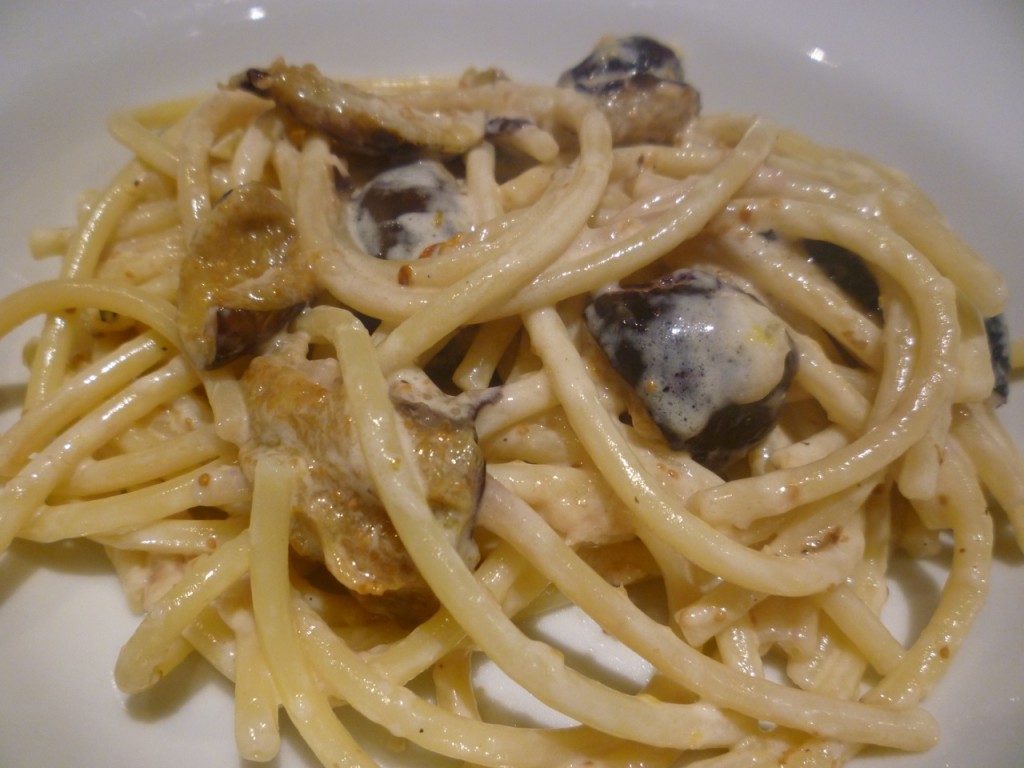
One of the highlights of our late summer/early fall bike tours in Italy is admiring the fresh figs hanging from the trees, just asking to be picked and savored. We are careful not to annoy the local farmers and just help ourselves, but have been offered a just-picked fresh fig by the proud grower as we stopped to observe him high up in a tree. As a resident of the US Northeast, being surrounded by fig trees, with their exaggerated leaves and lush, juicy fruit is truly an exotic experience, as we enjoy our immersion into the Mediterranean atmosphere of Italy.
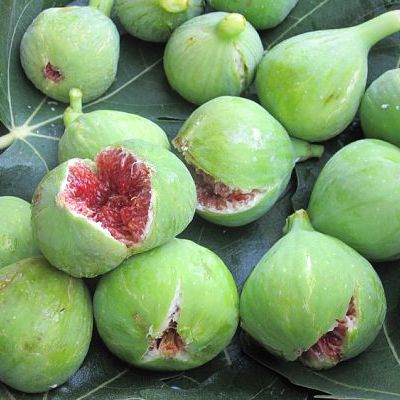
Fig trees are believed to have originated in western Asia and the Middle East, before spreading throughout the Mediterranean countries—from Greece to Spain, and of course, Italy. It is an ancient tree, with fossils dating back at least 9000 years. The fig tree has been regarded as sacred in many cultures, appearing in Greek mythology, and eventually in the lore of the Roman Empire – Romulus and Remus, the founders of Rome, were suckled by a she wolf under a fig tree. They became a dietary staple, both fresh and dried. During times of famine, figs saved entire populations, and since then the fruit has been associated with bounty and abundance.
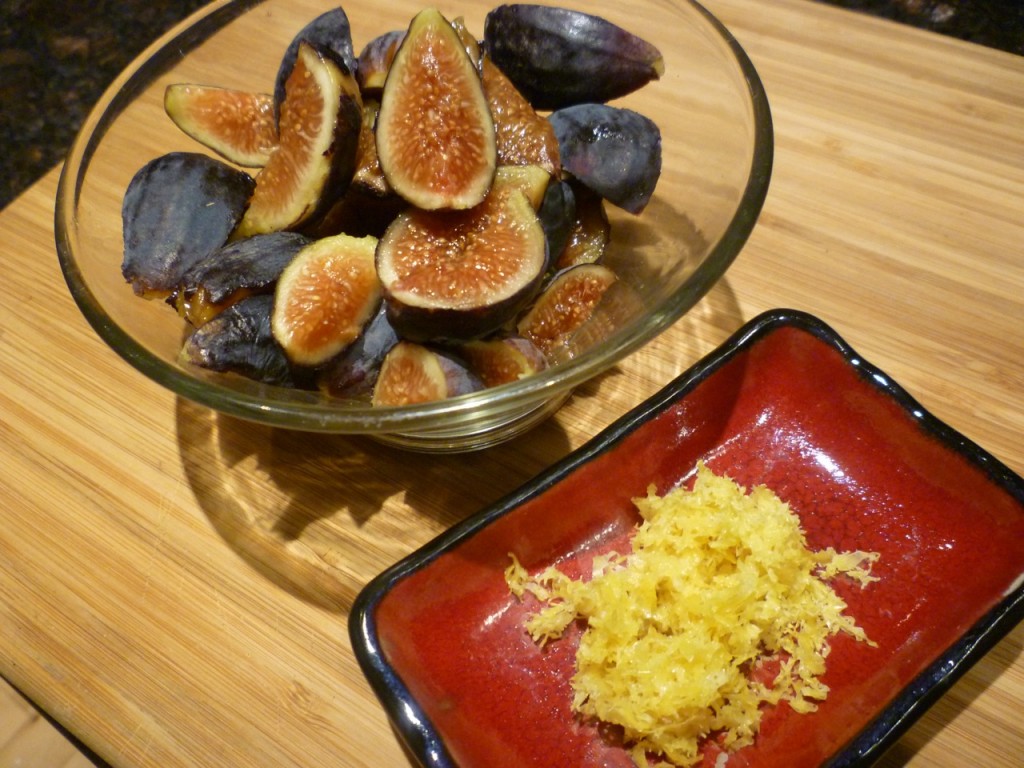
In warmer climates, the fig tree will produce two crops, the latter of which appears in mid-summer and autumn, and yields the sweetest fruit.
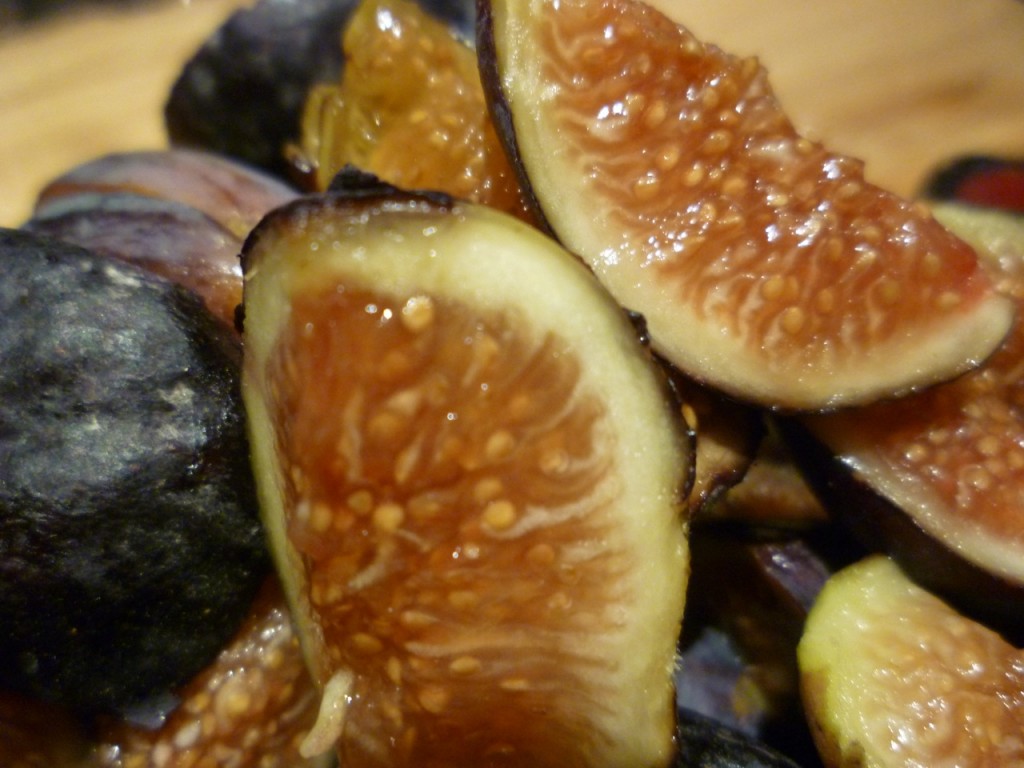
I recently served some fresh figs at a cooking class as part of an antipasti, and I was quite surprised by the number of people who had never tried a fresh fig! They are common to find this time of year in Italy, served with cheese and prosciutto. They are a wonderfully tasty and attractive addition to an antipasti, and so easy to include as there is minimal prep involved – no peeling, just a quick light wash. Use quickly, within a day or so of purchase.
Here’s a simple, quick, and very different pasta dish that uses fresh figs. You can substitute dried figs, but this becomes totally over the top with the real, fresh thing. I served this with a grilled steak, topped with a bit of balsamic – delicious!
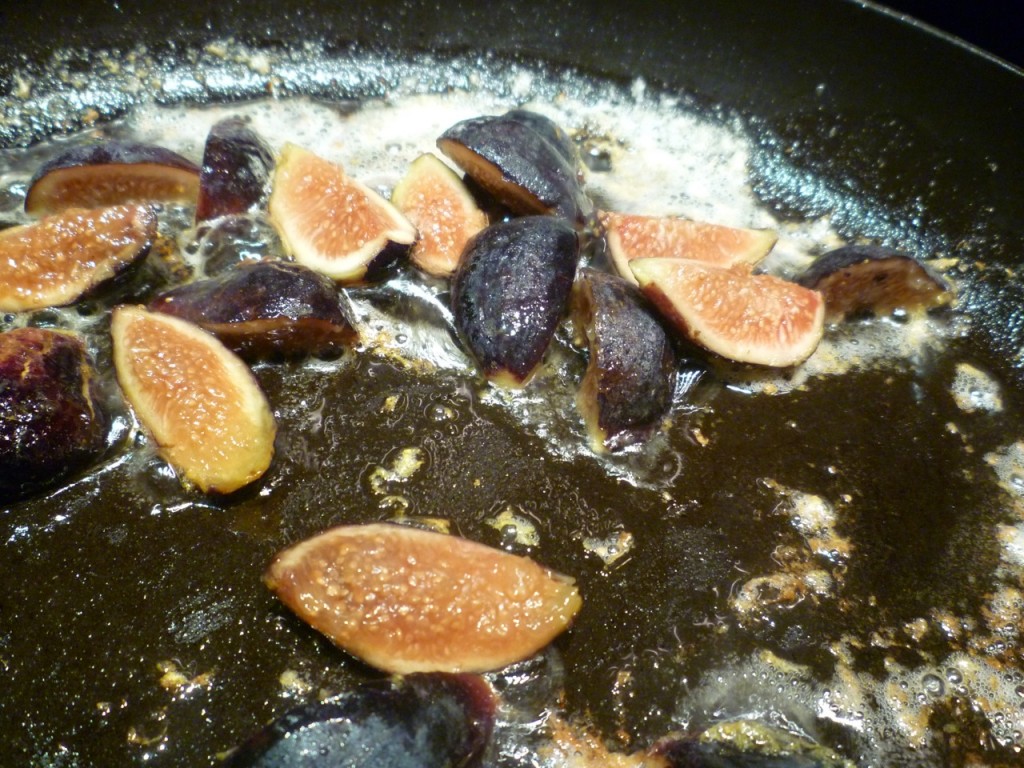
Bucatini with Fresh Figs Franco Rossi
This recipe is adapted from Lynne Rosetto Kasper’s wonderful cookbook, The Splended Table. She describes this as renaissance-inspired dish created at Bologna’s Ristorante Franco Rossi, which is still open today. The original recipe called for tagliarini, but fettucine or bucatini is a fine substitute, and for me, easier to find.
Serves 6-8
1 lb. fettucine, bucatini or other long, thick pasta
4 tablespoons unsalted butter
Zest of 1 lemon
12 large ripe figs, quartered
Generous pinch of crushed red pepper flakes
Heaping 1/4 teaspoon freshly ground black pepper
1 cup heavy cream
1 1/4 cups freshly grated Parmigiano Reggiano cheese
Kosher salt
Fill a large pot with water, and bring to a boil. Add salt, and then the pasta. Cook until not quite al dente, we will keep it warm and it will continue to cook a bit. Drain, and keep pasta warm in the pot.
Place the butter in a large saute pan, and melt over medium high heat. When the pasta has been cooked and drained, begin the sauce. You don’t want the figs to over cook at all, so best to have all of your ingredients ready, the pasta cooked and keeping warm.
When ready to begin, add the lemon zest to the melted butter, increase the heat to high, and cook for about 30 seconds. Add the figs and the peppers. Cook for 1 minute, searing the figs on the cut sides.
Once the figs are cooked, add to the drained pasta, along with the cream. Place this pan over the heat and toss for no more than 30 seconds. Add the cheese and toss until just blended. Season with salt, and serve.

Pingback: Eating Invisible Flowers | Pure Portugal Blog